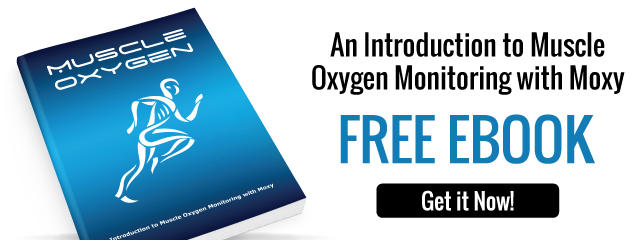Why Do We Do 5-Minute Step Lengths for MOXY Assessments?
 I am frequently asked why we recommend 5-minute step lengths for MOXY assessments. To appreciate the answer, you must first consider “What is the goal of the assessment?”
I am frequently asked why we recommend 5-minute step lengths for MOXY assessments. To appreciate the answer, you must first consider “What is the goal of the assessment?”
Is the goal to find a maximum performance value or to learn where and how physiological systems may be limited?
I think we are always looking for physiological reactions rather than maximal wattage or any maximal physical information, so this is what guides our choice for step length.
Designing the Test Protocol
In any assessment, whether it is with Moxy or VO2max or blood lactate, the results depend a lot on the design of the test protocol. It is important to understand why SmO2 drops or doesn’t drop during the assessment; it is also important to see the trends in tHb, an indicator of blood volume change. This information helps to identify if the athlete has a problem delivering enough oxygen to the muscle or whether the muscle has a problem utilizing the oxygen. Depending on the results, the training intensity will be different and we may plan a structural improvement or a functional adjustment.
Many new MOXY users using the 5-minute load/1-minute unload/5-minute load protocol might be unhappy with the results because their wattage level may be far off from what they were able to push in a 3-minute step test. Their VO2 max will also be very different in a 5/1/5 than in a 3-minute step test or a classical VO2 max test protocol.
This means that step length and design will create a result, but is it a result which can be used for training intensity zones, or is it just a result that looks good on zoning sheets? If there is something like a VO2 max, then why do we have this discrepancy when we have different step length protocols? Why is 3 minutes better than 1 minute or 5 minutes?
Perhaps there is no such thing like a VO2 max but only a VO2 peak tested on a given day using a particular activity on a specific person.
For assessing the training needs of an athlete, we need feedback that tells us what happens when the athlete changes from one preferred metabolic energy delivery system to another. We need to identify whether the athlete has a delivery or a utilization limitation. This will allow us to create a training plan that addresses the needs of the athlete.
Identifying Physiological Limitations
Longer step lengths allow us to see the physiological limitation of different systems more clearly. Due to the nature of the reactions (fight and flight) we will see always different reactions options (G.A.S Hand Selye). We always start with an Alarm phase, which means we will start with a functional reactions first before we may change over into structural integration.
Here are some easy examples.
If you start a new load you need more energy. The delivery systems (heart, blood vessels, and respiration) all have different ways to react to this new stimuli.
The heart can react over the often-used heart rate (frequency) first, but it can later try to increase the volume-per-beat (stroke volume-SV) and CO (cardiac output) = HR x SV. To have a chance to use HR and SV, we need some time or the circulatory system to react.
The same is true with respiration. The volume-per-minute we breath (VE) is similar to the CO in the heart. VE = RF (respiratory frequency) x TV (tidal volume, the amount per breath we can move).
Again, we have different ways to try to react to be able to deliver for the new load. Here we also have a faster reacting option and a follow up, slower reacting, but more efficient, option. All this takes time and an accepted step length of 5 minutes and longer. Anything shorter may not allow the systems to see whether they may still be able to shift from a functional reaction to a more efficient structural integration.
We are trying to separate true disruptions in homeostasis of the physiologic systems of the body from the “fight or flight” response when the body is challenged with a new load; 5-minute steps give the body enough time to attempt to regain homeostasis at the new load. The fact that 5 minute loads cause different peak performance values than a more typical 3-minute load isn’t really relevant.
There are also times when we look at the rapid response that occurs at the onset or the removal of load. We may do much shorter load steps in these cases. Again, the impact of load step length on the maximum performance isn’t important. In these cases, we look for how quickly the body is able to react to the change in load.
In summary, we choose the load step length that provides the most useful assessment information not the most consistent peak performance values.
Follow @MoxyMonitor

